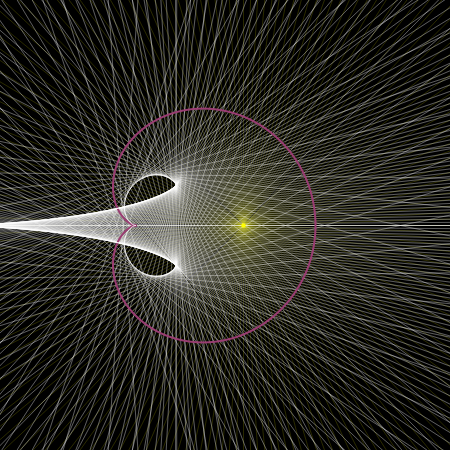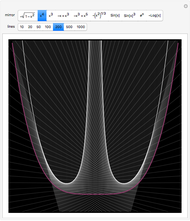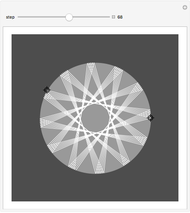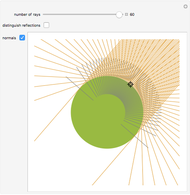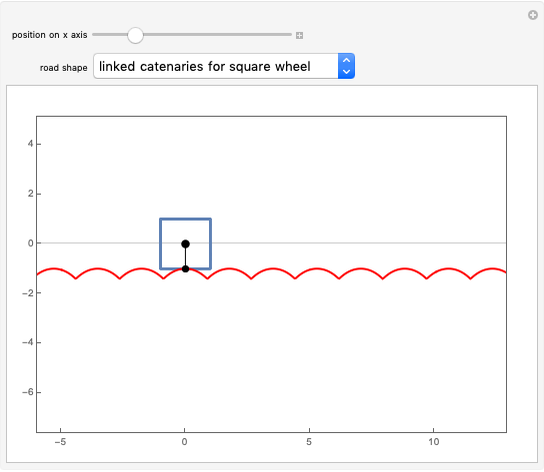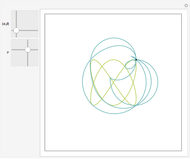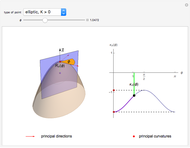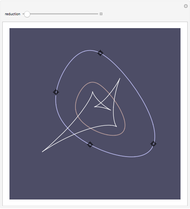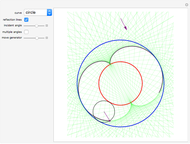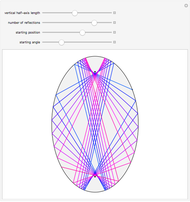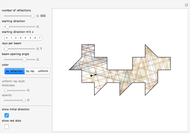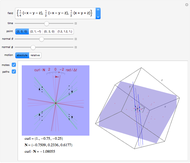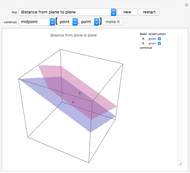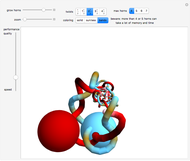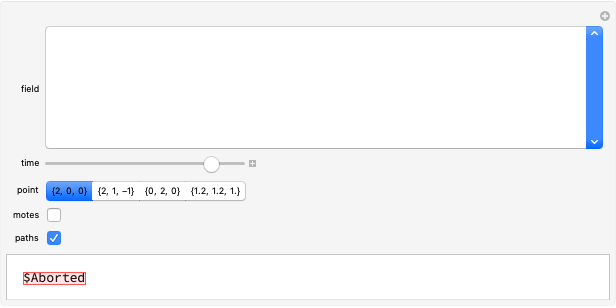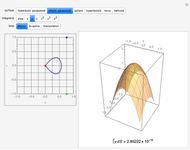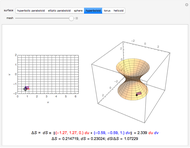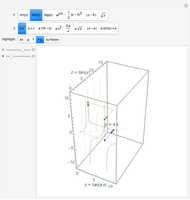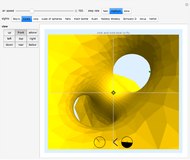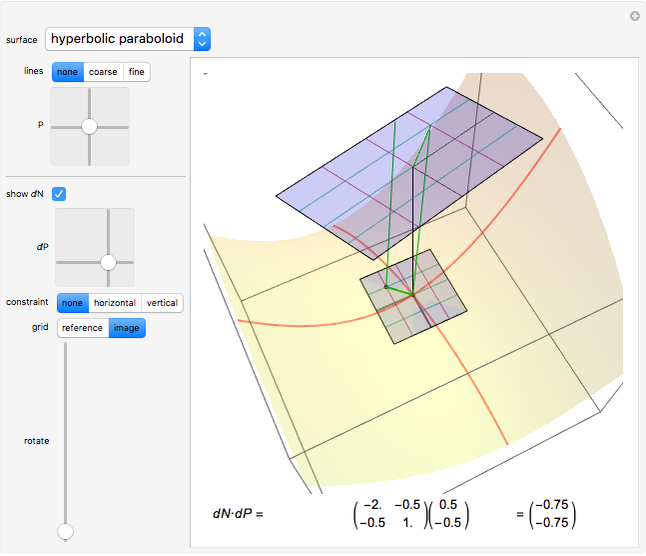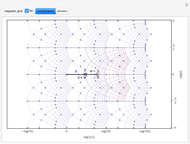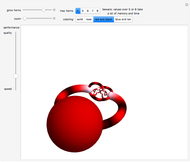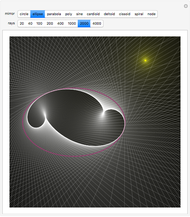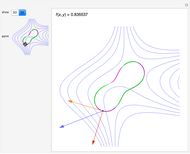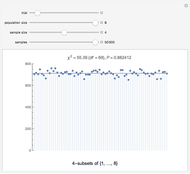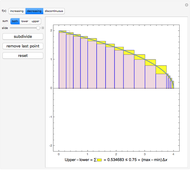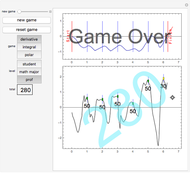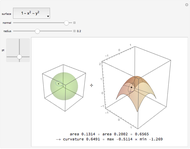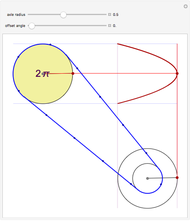Catacaustics Generated by a Point Source

Requires a Wolfram Notebook System
Interact on desktop, mobile and cloud with the free Wolfram Player or other Wolfram Language products.
Rays from a point source reflect in curve ("mirror") and the corresponding catacaustic is plotted. The catacaustic is the envelope of the reflected lines. Click in the graphic to change the location of the light source. (Rays from the source are a pale, translucent yellow; reflected lines are white.)
Contributed by: Michael Rogers (Oxford College of Emory University) (March 2011)
Open content licensed under CC BY-NC-SA
Snapshots
Details
The whole line on both sides of the mirror is drawn, not just the reflected ray. Thus the whole mathematical caustic and not just the part corresponding to a physical mirror is made.
For some mirrors a large number of rays leads to a very slow response and the picture is not always "prettier" than a smaller number; for others, a large number of rays makes a pretty picture. Even a moderate number of rays may take a couple of seconds to render.
The yellow rays fade as the number of rays increases. This is so they do not obscure the caustic when their number is large.
The curve called "node" is a Tschirnhausen cubic, which can also be seen on the corresponding MathWorld page (see Related Links).
Envelopes: If  is a family of curves depending on a parameter
is a family of curves depending on a parameter  , then the envelope of the family is the solution to the system
, then the envelope of the family is the solution to the system  . In a catacaustic, the family consists of the reflected lines, and the parameter
. In a catacaustic, the family consists of the reflected lines, and the parameter  is the parameter of the parametrization of the mirror curve. In this case the system is linear in
is the parameter of the parametrization of the mirror curve. In this case the system is linear in  and
and  and has a closed-form solution.
and has a closed-form solution.
Permanent Citation
"Catacaustics Generated by a Point Source"
http://demonstrations.wolfram.com/CatacausticsGeneratedByAPointSource/
Wolfram Demonstrations Project
Published: March 7 2011
